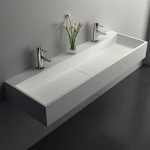Laying Vinyl Floor Tiles in a Bathroom: A Comprehensive Guide
Installing vinyl floor tiles in a bathroom is a popular choice due to the material's affordability, water resistance, and ease of installation. A well-laid vinyl floor can transform a bathroom's aesthetics while providing a durable and practical surface. This article provides a detailed guide to laying vinyl floor tiles in a bathroom, covering preparation, installation, and necessary considerations.
I. Preliminary Assessment and Preparation
Before commencing the installation process, a thorough assessment of the bathroom floor is crucial. This involves identifying any existing damage, such as cracks, unevenness, or signs of moisture. Addressing these issues before laying the vinyl tiles is paramount to ensure a long-lasting and aesthetically pleasing result. Ignoring pre-existing problems can lead to tile lifting, cracking, or even mold growth underneath the flooring.
The first step is to remove all existing flooring, including any old tiles, linoleum, or carpeting. Use appropriate tools such as a scraper, putty knife, and pry bar to carefully lift and remove the old material. Take precautions to avoid damaging the subfloor during this process. If the existing flooring is glued down, a heat gun or adhesive remover may be necessary to soften the adhesive and facilitate removal.
Once the old flooring is removed, the subfloor should be thoroughly inspected. Look for any signs of damage, such as cracks, rot, or moisture. Repair any damaged areas with appropriate patching compounds or wood fillers. Level any uneven surfaces using a self-leveling compound. This ensures a smooth and even surface for the vinyl tiles to adhere to, preventing future problems such as tile flexing or cracking.
Cleaning the subfloor is another critical step in the preparation process. Use a vacuum cleaner to remove any dust, debris, or loose particles. Then, clean the surface with a damp mop and a mild detergent. Ensure the subfloor is completely dry before proceeding to the next step. A clean and dry subfloor will promote proper adhesion of the vinyl tiles, resulting in a more durable and long-lasting installation.
Acclimatizing the vinyl tiles to the bathroom environment is also essential. Bring the tiles into the bathroom at least 48 hours before installation and allow them to adjust to the room's temperature and humidity. This will help prevent the tiles from expanding or contracting after installation, which can lead to gaps or buckling.
Finally, gather all the necessary tools and materials before starting the installation process. These include vinyl floor tiles, measuring tape, straight edge, utility knife, trowel (if using adhesive), adhesive (if required), pencil, safety glasses, and knee pads. Having all the tools and materials readily available will streamline the installation process and prevent unnecessary delays.
II. Installation Process: Laying the Vinyl Tiles
After the subfloor has been properly prepared, the next step is to begin laying the vinyl tiles. A dry layout is highly recommended before applying any adhesive. This involves arranging the tiles on the floor without adhesive to determine the best layout and identify any potential issues. Start by finding the center of the room. This can be done by measuring the length and width of the room and marking the halfway points on each wall. Then, use a chalk line to draw two intersecting lines connecting the halfway points. The intersection of these lines marks the center of the room.
Begin laying the tiles from the center of the room outwards, following the chalk lines as a guide. This ensures that the tiles are evenly distributed and that any partial tiles are located along the edges of the room, where they are less noticeable. Maintain a consistent spacing between the tiles, if required, using tile spacers. This will create a uniform and professional-looking finish.
Once the dry layout is complete, make any necessary adjustments to the layout. This may involve shifting the tiles slightly to ensure that they are properly aligned or adjusting the size of the border tiles to fit the space. Carefully measure and mark the tiles that need to be cut. Use a straight edge and a utility knife to score the tiles along the marked lines. Then, snap the tiles along the scored lines. For more intricate cuts, a jigsaw or tile cutter may be necessary.
With the dry layout finalized and the tiles cut to size, it's time to apply the adhesive (if using). Follow the manufacturer's instructions for the adhesive application. Spread the adhesive evenly over a small section of the subfloor using a trowel. Work in small sections to prevent the adhesive from drying out before the tiles are installed. Press the tiles firmly into the adhesive, ensuring that they are properly aligned and that there are no air bubbles underneath. Use a roller to apply even pressure across the entire tile surface. Wipe away any excess adhesive with a damp cloth.
Continue laying the tiles, section by section, until the entire floor is covered. Allow the adhesive to dry completely according to the manufacturer's instructions before walking on the floor. This typically takes 24-48 hours. After the adhesive has dried, apply grout (if using) to the tile joints. Follow the manufacturer's instructions for grout application. Wipe away any excess grout with a damp sponge. Allow the grout to cure completely before sealing it with a grout sealer.
III. Addressing Specific Bathroom Considerations
Bathrooms present unique challenges when installing vinyl floor tiles due to the presence of fixtures such as toilets, sinks, and bathtubs. Careful planning and execution are required to ensure a professional and watertight installation around these fixtures.
When installing tiles around a toilet, remove the toilet if possible. This will allow for a more seamless and watertight installation. If removing the toilet is not feasible, carefully measure and cut the tiles to fit around the base of the toilet. Use a jigsaw or tile cutter for more intricate cuts. Seal the perimeter of the toilet base with caulk to prevent water from seeping underneath the tiles.
Similarly, when installing tiles around a sink or bathtub, carefully measure and cut the tiles to fit around the base of the fixture. Use a jigsaw or tile cutter for more intricate cuts. Seal the perimeter of the sink or bathtub with caulk to prevent water from seeping underneath the tiles. Pay particular attention to areas where the floor meets the wall. Apply a bead of caulk along the perimeter of the room to create a watertight seal.
Ventilation is also a crucial consideration in bathrooms. Ensure that the bathroom is properly ventilated to prevent moisture buildup, which can lead to mold and mildew growth. Regularly clean the vinyl floor tiles with a mild detergent and water. Avoid using harsh chemicals or abrasive cleaners, as these can damage the surface of the tiles. Inspect the floor regularly for any signs of damage or wear. Repair any damaged areas promptly to prevent further deterioration. Following these guidelines will contribute to a long-lasting and aesthetically pleasing vinyl floor in the bathroom.
When dealing with pipes protruding from the floor, make accurate measurements of their location and diameter. Transfer these measurements to the vinyl tile that will cover the area. Use a hole saw of the appropriate size to create a clean, circular opening in the tile. If a hole saw is not available, carefully cut the tile with a utility knife, making multiple passes to avoid chipping. After placing the tile around the pipe, use caulk to seal the gap between the tile and the pipe, preventing water from entering and damaging the subfloor.
For more complicated layouts or intricate designs, consider creating a template. Use cardboard or heavy paper to trace the outline of the area where the tiles will be laid. Cut out the template and use it as a guide to cut the vinyl tiles. This technique is particularly helpful when working around irregular shapes or corners.
During the installation process, periodically check the levelness of the tiles. Use a level to ensure that the tiles are flush with each other. If any tiles are uneven, gently tap them into place with a rubber mallet. Avoid using excessive force, as this can damage the tiles.
After the installation is complete, allow the adhesive or grout to cure fully before placing any heavy objects on the floor. This will prevent the tiles from shifting or becoming misaligned. Protect the floor from scratches and dents by using felt pads under furniture legs. Consider using rugs or mats in high-traffic areas to further protect the floor from wear and tear.
By following these instructions and taking the necessary precautions, a durable and visually appealing vinyl floor can be achieved in a bathroom. Remember to consult the manufacturer's instructions for specific guidelines regarding the vinyl tiles and adhesive being used. Proper installation and maintenance will ensure that the vinyl floor provides years of service and enhances the overall appearance of the bathroom.

How To Lay Vinyl Floor In A Bathroom Dove Cottage

Vinyl Planks In Bathrooms Residential Inspiration Flooring

How To Install Sheet Vinyl Floor Decor Adventures

How To Install Vinyl Plank Flooring In A Bathroom Fixthisbuildthat

How To Install Vinyl Plank Flooring In A Bathroom Fixthisbuildthat

How To Install Vinyl Plank Flooring In A Bathroom

Achieve High End Hardwood Looks For Your Dream Bath In Lvt

How To Lay Vinyl Floor In A Bathroom Dove Cottage

How To Lay Vinyl Flooring Sheet Over Tiles

How To Install Vinyl Plank Flooring In A Bathroom
Related Posts







